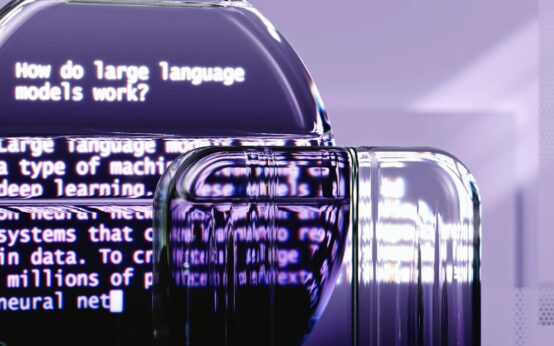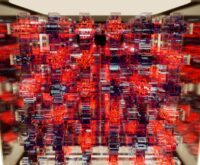The Unsung Heroes of Web3: Your Ultimate Guide to Blockchain Oracles
So, you’ve started to wrap your head around blockchain. You get the basics of distributed ledgers, you understand how smart contracts on Ethereum can automate agreements. It’s all self-contained, secure, and deterministic. But then a question pops into your head: if a smart contract is just code living on a blockchain, how does it know the price of Bitcoin? How does it know if it rained in Tokyo today? How does it know who won the World Cup? The blockchain itself has no clue. It’s a closed, isolated system. That’s where the unsung, and absolutely critical, heroes of Web3 come into play: blockchain oracles.
Think of them as the bridge between the digital, deterministic world of the blockchain and the messy, ever-changing, real world we all live in. Without them, smart contracts would be incredibly limited, unable to react to anything outside their own coded walls. They are the data conduits that make decentralized finance (DeFi), parametric insurance, and dynamic NFTs not just possible, but powerful.
Key Takeaways
- What They Are: Blockchain oracles are third-party services that find and verify real-world information and submit it to a blockchain for smart contracts to use.
- The Core Problem They Solve: Blockchains can’t access off-chain data on their own. This is known as the “oracle problem.” Oracles act as a secure bridge to this external data.
- Why They’re Crucial: They enable smart contracts to execute based on real-world events, like price changes, weather conditions, or flight delays, which is the foundation for most of DeFi and other advanced dApps.
- Types of Oracles: They come in many forms, including software (for web data), hardware (for physical sensors), inbound/outbound, and most importantly, centralized vs. decentralized.
- Decentralization is Key: A single, centralized oracle creates a single point of failure, undermining the whole purpose of a decentralized system. Decentralized Oracle Networks (DONs) are the gold standard.
What Exactly Is a Blockchain Oracle? Let’s Use an Analogy
Imagine a brilliant programmer who speaks only in computer code. He’s locked in a secure, soundproof room. You want to give him a simple instruction: “If the temperature outside goes above 30°C, transfer $10 to Bob.”
The programmer is perfectly capable of executing the “transfer $10 to Bob” part. That’s his language. But he has no way of knowing the temperature outside. He can’t see the weather, he can’t access a weather website. He’s completely isolated.
To solve this, you hire a trusted messenger. This messenger’s only job is to go outside, check a reliable thermometer, come back to the room, and translate that information into a format the programmer understands. “TEMP > 30 = TRUE.”
In this analogy:
- The programmer is the smart contract.
- The secure room is the blockchain.
- The messenger is the blockchain oracle.
That’s it. At its core, an oracle is a trusted entity that fetches external, off-chain data, verifies it, and delivers it on-chain so that smart contracts can act upon it. They don’t create the data; they are just the delivery service.

The Oracle Problem: Why Blockchains Need a Bridge
Why can’t a blockchain just… look up the price of Ethereum on Google? The reason is fundamental to what makes a blockchain secure and reliable: determinism. Every node on a network like Ethereum must process a transaction and arrive at the exact same result. If they don’t, the consensus breaks down, and the whole system fails.
Now, imagine a smart contract that calls an API (a web data source) to get the price of ETH. If Node A in New York calls the API at 10:00:01 AM, it might get a price of $3,500.10. If Node B in Frankfurt calls it a fraction of a second later, the API might have updated, returning a price of $3,500.12. And a Node C in Singapore might have a network lag and get a slightly different result or even an error.
Suddenly, you have three nodes with three different results. Consensus is impossible. The blockchain grinds to a halt. This is why blockchains are deliberately built as walled gardens. They cannot, by design, make external network calls. This is the famous “oracle problem.” Oracles are the solution, providing a single, verified, deterministic piece of data that all nodes can agree on.
How Do Blockchain Oracles Actually Work? A Step-by-Step Look
While the specifics vary, the general workflow for a decentralized oracle network looks something like this:
- Request for Data: A smart contract needs specific information. For instance, a lending protocol needs the current, reliable price of ETH/USD to check if a loan is undercollateralized. It submits a data request to the oracle network’s on-chain contract.
- The Oracle Network Takes Over: The oracle’s on-chain contract emits this request as an event. Off-chain oracle nodes, which are constantly listening for these events, pick up the job.
- Sourcing and Aggregation: This is the magic. A single oracle node doesn’t just pull data from one source. That would be risky. Instead, dozens or even hundreds of independent nodes go out and fetch the data from multiple high-quality, premium data aggregators (like Bloomberg, Reuters, Kaiko, etc.).
- Validation and Consensus: The nodes report their findings back to the oracle network. The network then aggregates all these different data points. It might throw out extreme outliers and take the median or a weighted average of the remaining responses. This process ensures that a single faulty or malicious source can’t corrupt the final result.
- On-Chain Delivery: The aggregated, validated, and finalized piece of data is then written into a single transaction and broadcast back to the blockchain. The original smart contract can now read this reliable data point and execute its logic with confidence.
It sounds complex, and it is! But this robust process is what allows us to trust the data fed into multi-billion dollar DeFi applications.
Diving into the Different Types of Oracles
The term “oracle” is a broad one. They can be categorized in several ways based on what they do and how they are designed.
Software vs. Hardware Oracles
This is probably the most straightforward distinction. Software oracles handle information that is available online. Think website APIs, server data, price feeds, flight statuses, or weather reports. They pull data from the digital world. The vast majority of oracles in use today are software oracles.
Hardware oracles, on the other hand, get their information from the physical world. They act as a bridge for physical devices. Imagine a supply chain system where a smart contract needs to know if a shipping container has arrived at a port. A hardware oracle could connect to an IoT sensor or an RFID scanner on the container to report its physical location to the blockchain. This opens up a world of possibilities for real-world asset tracking and insurance.

Inbound vs. Outbound Oracles
This simply refers to the direction of data flow.
- Inbound Oracles: These are the most common. They bring data from the outside world *onto* the blockchain. A price feed is a classic example of an inbound oracle.
- Outbound Oracles: These are less common but just as important. They allow a smart contract to send commands *out* to the real world. For example, a smart contract could receive a payment (on-chain action) and then use an outbound oracle to send a command to a traditional banking system (like SWIFT) to unlock a real-world asset or make a fiat payment.
Centralized vs. Decentralized Oracles
This is the most critical distinction and gets to the heart of Web3 philosophy. A centralized oracle is a single entity responsible for providing data. While this might be simple and efficient, it’s also incredibly risky. What if that single entity’s server goes down? What if they are hacked? What if they become malicious and deliberately provide bad data to manipulate a DeFi protocol?
Using a centralized oracle to feed data to a decentralized application is like building a fortified castle and then giving a single key to a stranger. It completely defeats the purpose of decentralization and creates a massive single point of failure.
This is why Decentralized Oracle Networks (DONs) are the standard for any serious project. A DON, like Chainlink, uses a network of independent, geographically distributed, and economically incentivized nodes. By requiring consensus from many different nodes and data sources, DONs achieve a high degree of tamper-resistance and reliability that mirrors the security of the underlying blockchain itself. If one node provides bad data, it gets outvoted by the honest majority and may even be penalized, losing its staked collateral.
Real-World Use Cases: Where Blockchain Oracles Shine
So, where is this technology actually being used? The applications are exploding.
- Decentralized Finance (DeFi): This is the big one. Virtually all of DeFi relies on oracles. Lending protocols like Aave and Compound need real-time price feeds to determine collateral values and trigger liquidations. Decentralized exchanges (DEXs) for synthetic assets and derivatives need oracles to peg their assets to real-world prices.
- Parametric Insurance: Imagine crop insurance that pays out automatically if a trusted oracle reports that rainfall in a specific region was below a certain level for 30 days. No claims adjusters, no paperwork, just an automatic payout triggered by a smart contract reading oracle data. This is already happening with flight delay insurance and hurricane protection.
- Dynamic NFTs (dNFTs): Oracles can allow NFTs to change based on external data. An NFT of a video game character could level up its stats based on the real-world performance of the player who owns it. An NFT of a basketball player could change its appearance or rarity if that player wins an MVP award.
- Supply Chain Management: As mentioned, hardware oracles can track goods from factory to storefront. Smart contracts could automate payments at each step of the journey, triggered by oracle data confirming a package’s location and condition via IoT sensors.
The Big Players: A Look at Major Oracle Networks
When you talk about blockchain oracles, one name dominates the conversation: Chainlink. It was one of the first projects to deeply understand and tackle the oracle problem with a decentralized approach. Today, its network secures tens of billions of dollars across the DeFi ecosystem, providing price feeds, proof of reserves, and other critical data services to a huge number of leading applications. Its success lies in the quality of its node operators, its use of premium data sources, and its robust crypto-economic incentive model that keeps everyone honest.
While Chainlink is the market leader, it’s not the only player. Other projects like Band Protocol, Pyth Network, and API3 are also building innovative solutions to the oracle problem, each with a slightly different architectural or economic approach. Competition in this space is a healthy sign of a maturing industry.

Challenges and Risks: The Oracle’s Dilemma
Oracles are powerful, but they are not without risks. The core challenge is the classic “Garbage In, Garbage Out” principle. A smart contract is only as reliable as the data it receives. If an oracle network, even a decentralized one, is fed bad data, it will pass that bad data to the smart contract, which will then execute flawlessly… but based on a flawed premise. This could lead to catastrophic financial losses.
The main risks include:
- Data Source Quality: If an oracle network relies on low-quality or easily manipulated data sources, the aggregated result will be weak.
- Network Latency: In times of extreme market volatility, there can be a lag between the real-world price and the on-chain price reported by the oracle, creating arbitrage opportunities or premature liquidations.
- Network Attacks: While difficult, a sophisticated attacker could try to compromise a majority of oracle nodes in a network (a 51% attack) to feed malicious data. This is why robust economic incentives and decentralization are so vital.
- Cost: Fetching and writing data to a blockchain isn’t free. It costs gas. Oracle networks have to be designed to be economically sustainable for both the data providers and the data consumers.
Conclusion
Blockchain oracles are one of the most important pieces of infrastructure in the entire Web3 ecosystem. They are the invisible but essential link that gives blockchains awareness of the world around them. Without them, smart contracts would be stuck in their digital cages, unable to perform the vast majority of useful tasks we envision for them. By solving the oracle problem, decentralized networks like Chainlink have unlocked the door to a new generation of smart contracts that are not only automated and secure but also smart enough to react to the complexities of real-life events. As blockchain technology continues to integrate with our world, the role of secure, reliable, and decentralized oracles will only become more critical.
FAQ
What is the most popular blockchain oracle?
By a significant margin, Chainlink is the most widely adopted and popular blockchain oracle solution. It provides the majority of the data feeds that power the multi-billion dollar DeFi ecosystem and is integrated with hundreds of applications across numerous blockchains.
Can an oracle be wrong?
Yes, but it’s designed to be incredibly difficult. A single oracle node can be wrong, but in a decentralized oracle network, a single wrong answer is usually discarded during the aggregation and consensus process. The risk lies in a scenario where the majority of data sources themselves are wrong, or a majority of the oracle nodes are compromised. This is why high-quality data sources and strong crypto-economic security are so important.
Are oracles a part of the blockchain itself?
No, and this is a key point. Oracles are not part of the base-layer blockchain protocol (like Ethereum or Solana). They are a separate, middleware service that sits between the blockchain (on-chain) and the real world (off-chain). They are the infrastructure that connects the two worlds.



 Holographic Technology: Sci-Fi to Reality & Future Uses
Holographic Technology: Sci-Fi to Reality & Future Uses  The Future of Robotics: From Warehouses to Your Home
The Future of Robotics: From Warehouses to Your Home  How Maglev Trains Work: The Floating Future of Travel
How Maglev Trains Work: The Floating Future of Travel  Software is Eating the World: A Deep Dive Analysis
Software is Eating the World: A Deep Dive Analysis  How Tech is Revolutionizing Disaster Response
How Tech is Revolutionizing Disaster Response  Geo-engineering Guide: Can We Really Hack the Planet?
Geo-engineering Guide: Can We Really Hack the Planet?  Social Media on Blockchain: The Next Digital Frontier
Social Media on Blockchain: The Next Digital Frontier  What is a Flash Loan? A DeFi Deep Dive for Beginners
What is a Flash Loan? A DeFi Deep Dive for Beginners  Crypto Swing vs Day Trading: Which Style Wins?
Crypto Swing vs Day Trading: Which Style Wins?  A Guide to NFT Generative Art Platforms (2024)
A Guide to NFT Generative Art Platforms (2024)  Crypto’s Carbon Footprint: The Real, Nuanced Story
Crypto’s Carbon Footprint: The Real, Nuanced Story  Join a Web3 Community: The Ultimate Networking Guide
Join a Web3 Community: The Ultimate Networking Guide